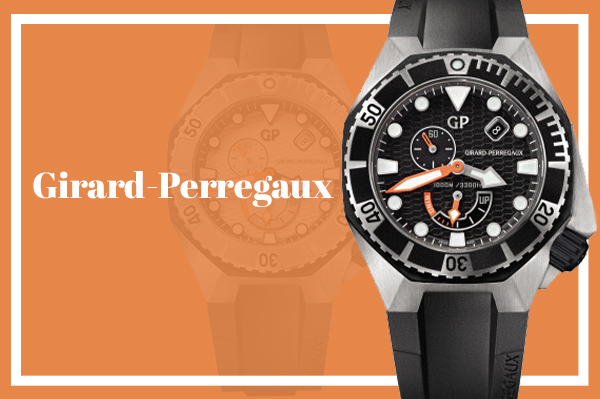The History of Girard-Perregaux
Back to News & Novelties
The nearly 230-year history of Girard-Perregaux begins in 1791 with a Swiss watchmaker and jeweler named Jean-François Bautte. Jean-François gained notoriety for his signature extra-thin watch models and housing all the watchmaking trades of his manufacturing company featuring under the same roof. He was an industrialist and a businessman, trading with all of the Royal Courts in Europe. The future Queen Victoria was among one of his many prestigious visitors.
1837-1906
When Jean-François passed away in 1837, his son Jacques Bautte and son-in-law Jean-Samuel Rossel took over operation of the company, forming the Jean-François Bautte & Cie Company.
In 1852, fellow Swiss watchmaker Constant Girard founded a watch firm called Girard & Cie. Two years later, he married Marie Perregaux, who came from a family of famed watchmakers. That same year, the husband and wife duo combined their names to create Girard-Perregaux Manufacture in La Chaux-de-Fonds.
It took only a few years for their reputation for excellence grew beyond Switzerland and Europe. And in 1867, Girard-Perregaux presented a Tourbillon at the Paris Universal Exhibition, winning a prize. In 1880, Girard was commissioned by German Kaiser Wilhelm I to develop wristwatches for his navy. It was the first significant market sale of wristwatches, having produced 2,000 for sale.
In 1889, his famed Tourbillon with three gold bridges won a gold medal at the Exposition Paris Universal Exhibition. In 1906, Girard-Perregaux bought the Bautte & Cie Company, merging to become Gerard-Perregaux & Cie.
1928-1966
Watchmaker and owner of Manufacture International de Montres Or (MIMO) bought the capital stock of Girard-Perregaux, keeping the Girard-Perregaux and MIMO brands separate.
During the 40s, the Girard-Perregaux brand saw continued expansion across Europe and the Americas, especially its SEA HAWK water-resistant model. And in 1945, the watch company created a rectangular Art Deco-inspired wristwatch, revived fifty years later in 95 as VINTAGE 1945.
In 1966, Girard-Perregaux introduced its first high-frequency movement at 36,000 vibrations per hour. Its high-performance High Frequency Chronometer watches received 70% of the chronometer certificates issued by the Neuchatel Observatory.
1970 – 1999
The 70s saw the watchmaker launch Switzerland’s first industrial production of quartz wristwatches with a 32,768 Hz frequency, which remains the universal standard for quartz watches today.
In 1975, the company introduced the Laureato, a sporty model with a polished, octagonal bezel and an integrated satin strap.
In the 1980s, Girard-Perregaux began making traditional, mechanical timepieces to head off the growing crisis in the Swiss watchmaking industry. This included remaking twenty pieces of their famous Tourbillon pocket watch with three gold bridges.
Italian entrepreneur, architect, and former race car driver Luigi Macaluso took over the helm of Girard-Perregaux in 1992, reforming the company’s structure. His leadership also saw a co-branding with Ferrari, creating the occasional, limited edition chronograph, sporty watches between 1994 and 2004.
For its 1999 entry into Salon International de la Haute Horlogerie, the company presented an automatic winding version of its classic Tourbillon.
2003 – Present Day
Girard-Perregaux renewed their historic role in the manufacturing of quartz watches, presenting a new family of movements with quartz technology. They introduced a line of women’s watches with Cat’s Eye concept, equipped with petite complication mechanical movements.
From 2004 to 2007, they partnered with Team BMW Oracle Racing for the 32nd America’s cup, resulting in more limited-edition watch collections. They also opened their first boutiques in Gstaad in 2004 and their first boutiques in Beijing and Shanghai in 2007.
They enhanced their portfolio at the 2006 SIHH with a collection of automatic winding mechanical movements with a caliber GP 2700 and a caliber GP 4500.Girard-Perregaux continues to expand its rich history in creating exceptional, luxury timepieces. At Swiss Fine Timing, we love sharing the history of some of the most fascinating in watchmaking.

